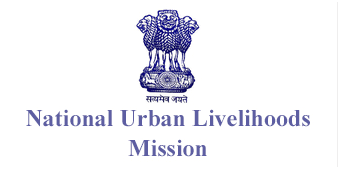National Urban Livelihood Mission - NULM

We are a empanelled training partner of NULM –National Urban Livelihood Mission, under Urban Ministry Govt. of India.
To reduce poverty and vulnerability of the urban poor households by enabling them to access gainful self employment and skilled wage employment opportunities,resulting in an appreciable improvement in their livelihoods on a sustainable basis,through building strong grassroots level institutions of the poor.The mission would aim at providing shelters equipped with essential services to the urban homeless in a phased manner.In addition,the mission would also address livelihood concerns of the urban street vendors by facilitating access to suitable spaces,institutional credit,social security and skills to the urban street vendors for accessing emerging market opportunities.
1.1 Economic development and urbanisation are closely linked. Cities in India are emerging as the country’s engines of economic growth, with a contribution of more than 60 per cent to GDP. As per Census of India, 2011, India’s urban population is now 377 million which shows a 31 per cent increase from 2001. The Report on Conditions of Work and Promotion of Livelihoods in the Unorganized Sector by the National Commission on Enterprises in the Unorganized Sector brought out in August 2007 (NCEUS, 2007) reveals that in 2004-05, out of India’s total workforce, 92 percent worked in the informal economy. The urban informal sector comprises a large part of the unorganized non-agriculture sector. Low levels of education and skill in the unorganized sector workers have resulted in their inability to access the opportunities offered by emerging markets. This underscores the criticality of skills up-gradation for better livelihoods opportunities in urban areas.
1.2 Most of the poor are involved in informal sector activities where there is a constant threat of eviction, removal, confiscation of goods and almost non-existent social security cover. Even when segments of the urban population are not income-poor, they face deprivation in terms of lack of access to sanitary living conditions and their well-being is hampered by discrimination, social exclusion, crime, violence, insecurity of tenure, hazardous environmental conditions and lack of voice in governance.
1.3 The dimensions of urban poverty can be broadly divided into three categories: (i) residential vulnerability (access to land, shelter, basic services, etc.); (ii) social vulnerability (deprivations related to factors like gender, age and social stratification, lack of social protection, inadequate voice and participation in governance structures, etc.) and (iii) occupational vulnerability (precarious livelihoods, dependence on informal sector for employment and earnings, lack of job security, poor working conditions, etc.). These vulnerabilities are inter-related. Amongst the urban poor, there are sections subject to greater vulnerability in terms of the above classification; these include women, children, and the aged, SCs, STs, minorities and differently-abled persons who deserve attention on a priority basis.
1.4 The National Urban Housing and Habitat Policy (NUHHP), 2007 aims to promote sustainable development of habitat in the country with a view to ensure equitable supply of land, shelter and services at affordable prices to all sections of the society. The most vulnerable of these are the urban homeless who live with no shelter or social security / protection. Recent pronouncements of the Supreme Court of India have brought into focus the plight of the urban homeless by holding that the right to dignified shelters is a necessary component of the right to life under Article 21 of the Constitution of India. There is therefore a need to develop a policy and programme for the urban homeless. 6 National Urban Livelihoods Mission :
1.5 Urban poverty being multi-dimensional, various vulnerabilities faced by the poor in cities and towns: occupational, residential and social need to be addressed simultaneously in a comprehensive and integrated manner with a targeted focus on the vulnerable groups so that a definitive impact can be made on ground. Residential vulnerability issues are being addressed through programmes like JNNURM and RAY. The other two vulnerabilities: occupational and social can be best addressed by creating opportunities for skill development leading to marketbased employment and helping them to set up self-employment ventures. Urban poverty alleviation programmes need to be based on skill development and easy access to credit. It is in this context that a mission-mode approach to urban livelihoods is considered necessary in the form of the National Urban Livelihoods Mission (NULM).
NULM Mission
To reduce poverty and vulnerability of the urban poor households by enabling them to access gainful self-employment and skilled wage employment opportunities, resulting in an appreciable improvement in their livelihoods on a sustainable basis, through building strong grassroots level institutions of the poor. The mission would aim at providing shelter equipped with essential services to the urban homeless in a phased manner. In addition, the Mission would also address livelihood concerns of the urban street vendors by facilitating access to suitable spaces, institutional credit, social security and skills to the urban street vendors for accessing emerging market opportunities.
